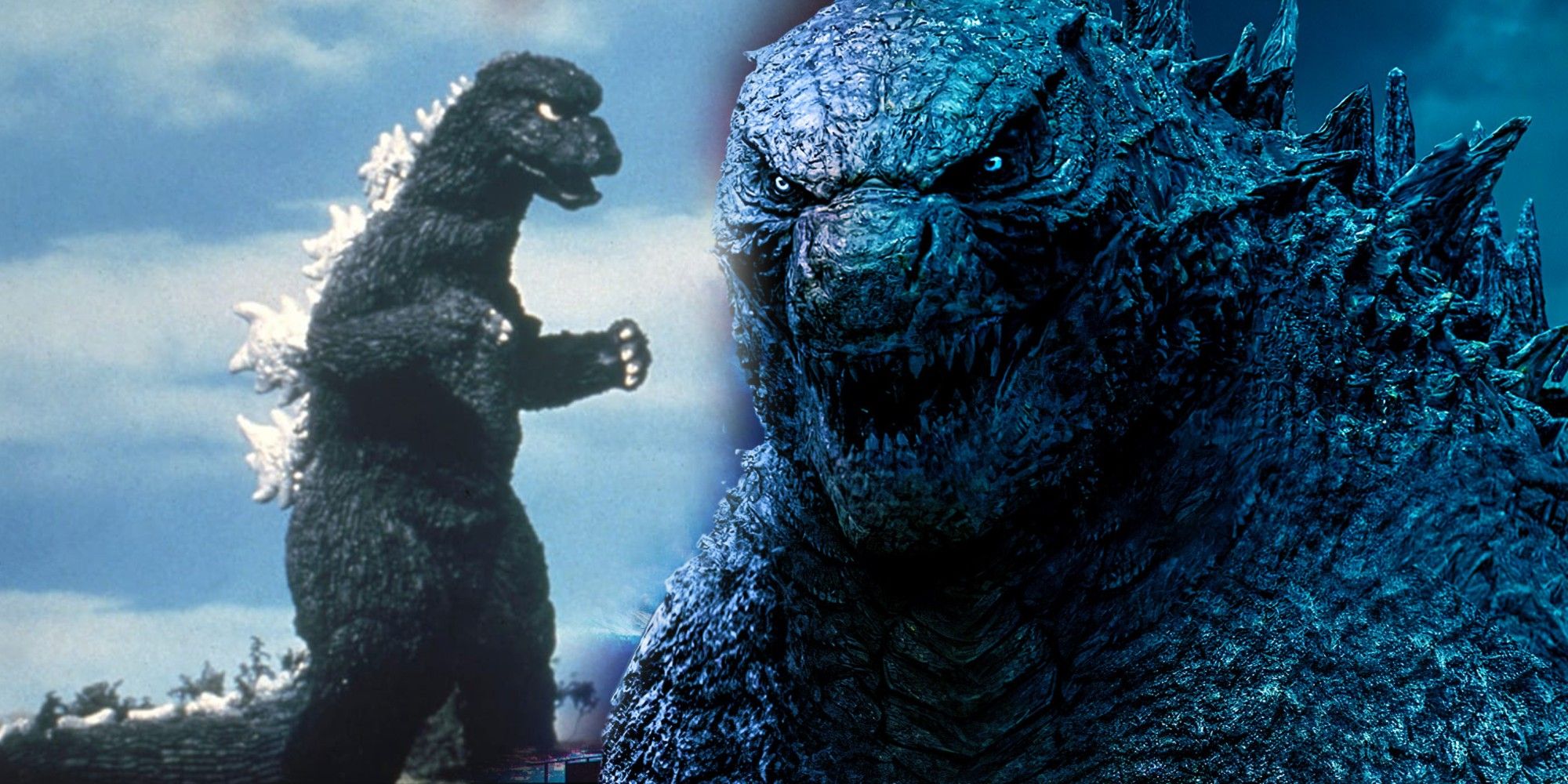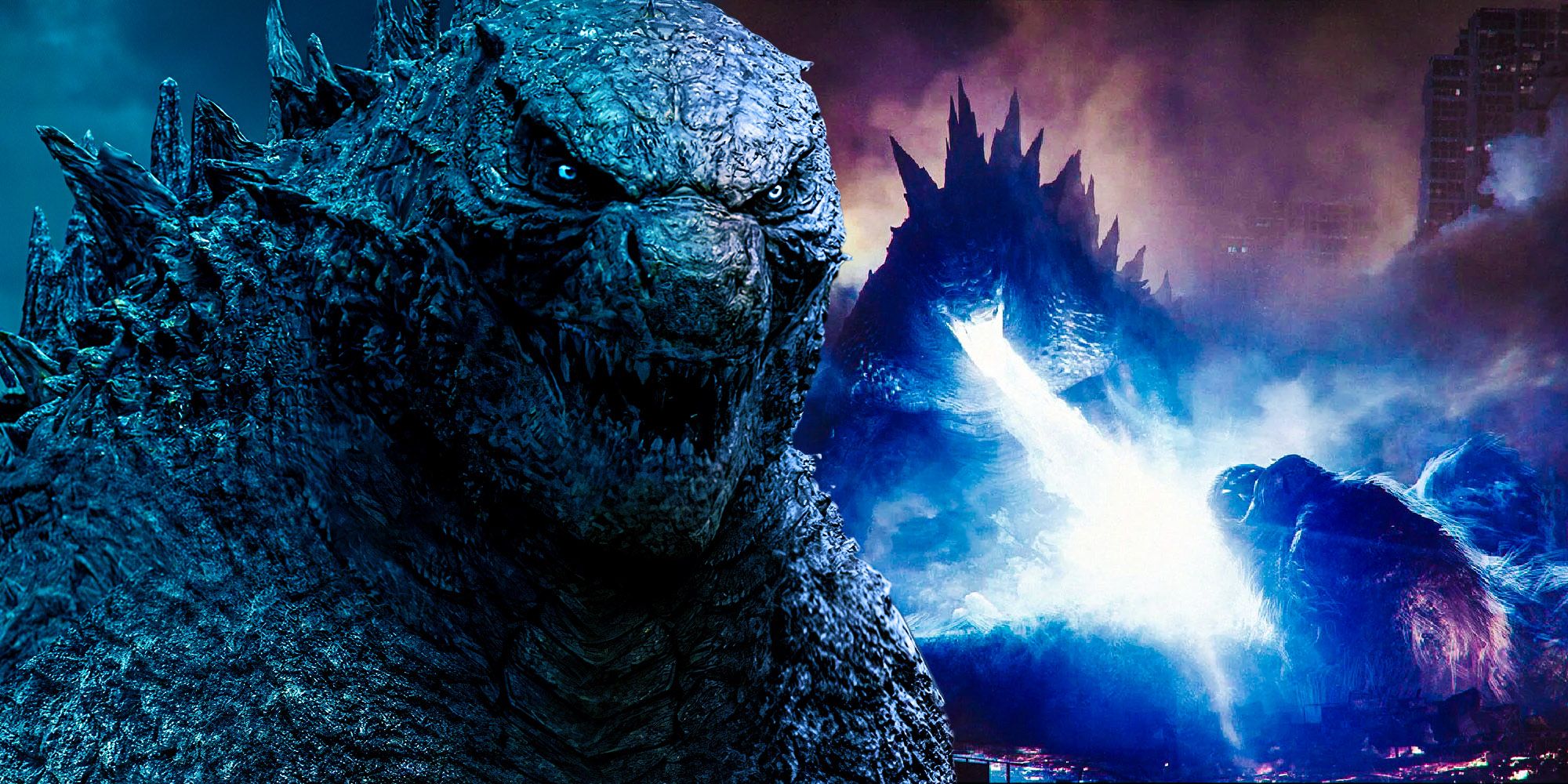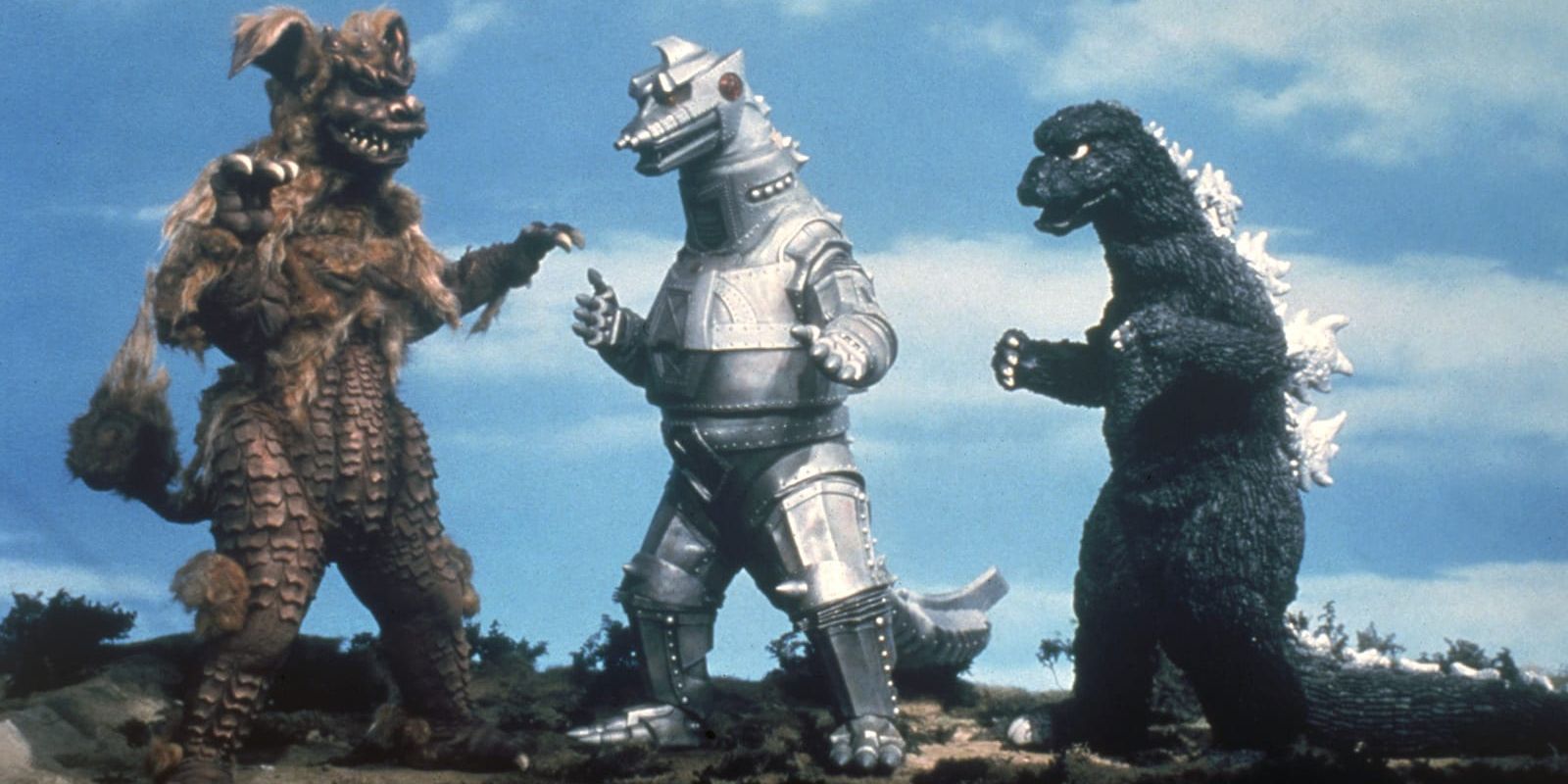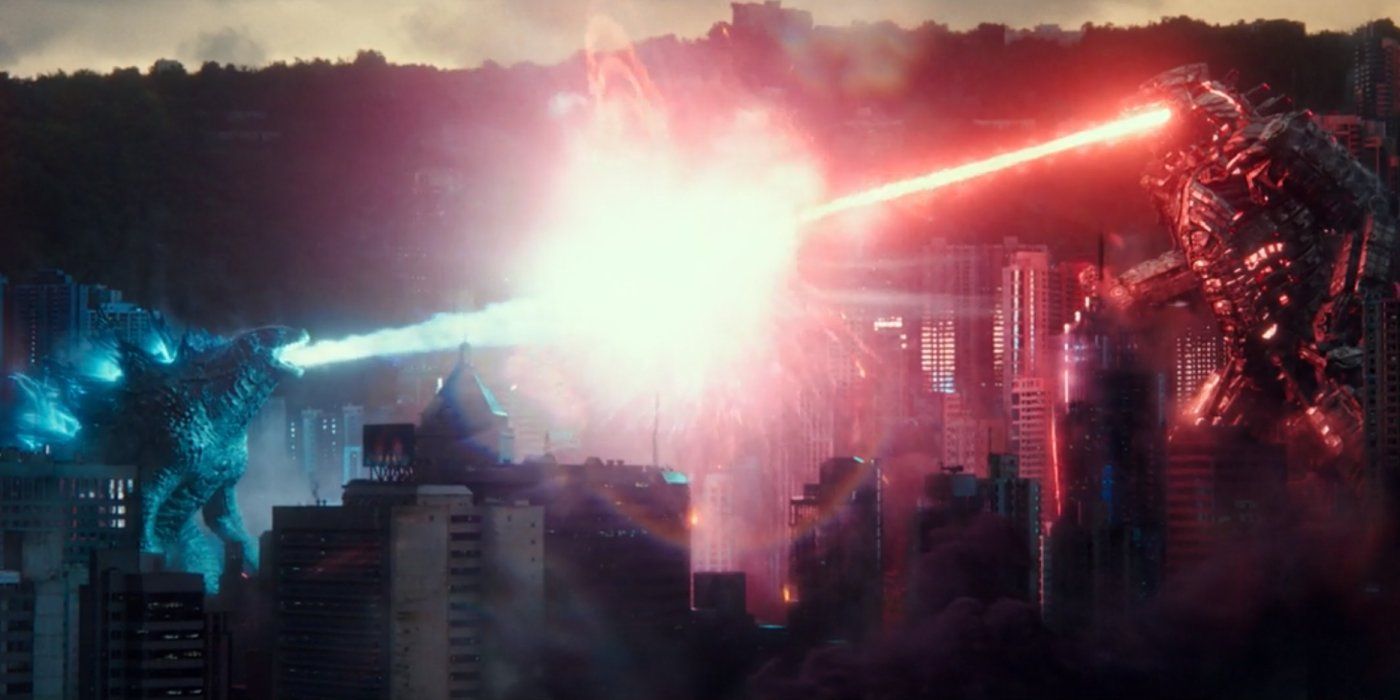Despite the epic scale of the giant monster fights that are the centerpiece of Godzilla vs Kong, the film is significantly lighter in tone than previous MonsterVerse entries. On the surface, this sounds like a mistake, but the whackier plot and more exaggerated monsters make for faster-paced mayhem with more satisfying payoffs. It may not be as grounded as the MonsterVerse's previous portrayals of Godzilla, but it sure is a lot more fun.
The 2014 iteration of Godzilla, as well as its sequel Godzilla: King of the Monsters, treated their conflicts with the utmost seriousness, raising the stakes to a level of worldwide devastation. These films portrayed their monsters as destructive forces of nature that pose an existential threat to the human race, unleashed and brought together in combat with the help of some scientific hubris on the part of the humans. These basic elements are still present in Godzilla vs. Kong, but the plot is significantly more fantastical and the big showdown feels a lot less dour.
A large part of the tone shift has to do with the film's treatment of its titular monsters, who are now unequivocally the main characters in their own movies. Kong has always had a strong personality, but it's Godzilla's evolution that becomes more apparent here. The King of the Monsters appears in the clear daylight more in this movie more than in any of the other MonsterVerse titles, and he even travels on the verge of legitimate facial expressions. The story is campier but also tighter, trimming the unnecessary human drama and convoluted sci-fi over-explanations to focus more on coming up with an excuse to get the monsters to fight. As a result, Godzilla vs Kong is breezy, pleasurable kaiju action.
Why Godzilla vs Kong Shows a Different Type of Godzilla
Godzilla 2014 received a fair dose of criticism for its decision to hold off on showing its kaiju star until the final portion of the movie. A foot or a dorsal fin popped up here and there, but audiences were denied seeing Godzilla in his full glory for most of the film's running time. This was most likely an admirable attempt at trying to capture the apocalyptic dread of the very first Godzilla from 1954, but it felt strange trying to make a mystery out of a giant monster who's already a famous icon. King of the Monsters promised more monster fights, but the sequel still leaned into depicting its Titans as representations of divine wrath brought on by and leading to environmental catastrophe.
This time around, audiences and critics were less forgiving of the serious tone and the awkward attempt at social commentary. The movie was met with a flurry of negative reviews and became a box office bust, placing the fate of Legendary's MonsterVerse in jeopardy. Then Godzilla vs Kong came along and showed people what they really wanted out of a kaiju movie, which turned out to simply be a pulpy showcase of beloved giant monsters punching each other. The human drama and any allusions to the real world take a backseat to the Titans themselves, who now emote and behave like king-sized characters instead of animalistic forces of nature. Kong: Skull Island may have introduced this type of dynamic, but Godzilla vs. Kong showed that Kong's personality-driven style could mesh with the King of the Monsters himself.
How Godzilla vs Kong Embraces the Showa Era
Godzilla vs. Kong may have certainly taken cues from Kong's debut MonsterVerse feature, but there's already plenty of existing Godzilla material to prove that a giant radioactive lizard can lighten up a little, too. In fact, there was a point when Godzilla was portrayed as a savior of humanity with moral attributes and behaviors. This cinematic period, dubbed the "Showa era" to correspond with Japan's historical cycle at the time, took place mostly during the mid-sixties to the mid-seventies, although the original 1954 Godzilla and its 1955 sequel Godzilla Raids Again are also considered part of the timeline.
Besides these first two entries, the Showa era had a campier style than later entries, relying on far-out plots that featured everything from aliens to fairies. But of course, it was the kaiju who were the main attractions, giant monsters who built friendships and rivalries with each other, all the while showing off their unique personalities. Godzilla didn't just step on buildings and breathe atomic fire; he laughed, he goofed around, he raised a son - and for a brief couple of seconds, Godzilla even spoke English. Godzilla vs Kong may have not reached quite the same level of camp as the Showa films, but it is the closest the MonsterVerse has come to those earlier days. Underground dimension-traveling spaceships, a robotic monster powered by the brain of another monster, and Godzilla's penchant to actually emote are all elements that fit snugly within the Showa mold.
How Godzilla vs Kong Benefitted from Its Tonal Shift
It turns out that ridiculous kaiju spectacle is what audiences were truly craving. Whereas King of the Monsters seemed like a death knell for the MonsterVerse, Godzilla vs Kong might have reinvigorated the franchise. #ContinueTheMonsterVerse became trending on Twitter, which Legendary itself was quick to share, and Godzilla vs Kong also had the highest-grossing domestic opening weekend of the pandemic yet. In fact, the tentpole blockbuster's $48,500,000 gross is already higher than its predecessor's opening numbers, which didn't quite pass the 48 million mark. Expertly handled viral marketing helped, but no one can deny that the movie delivered exactly what the trailers and ads promised.
The same can't exactly be said of Godzilla 2014 or King of the Monsters, both of which eschewed the opportunity for campy kaiju action for the sake of an overabundance of exposition and overly dour imagery. Whereas those movies were trying to resemble a high-stakes drama, Godzilla vs Kong is a B-movie script with a Hollywood blockbuster budget. That may sound like a backhanded compliment, but there's a respectable level of sincerity that comes with fully embracing the goofier side of Godzilla. The King of the Monsters grimaces, chuckles, and flaunts his bravado, finally becoming the living icon he has every right to be.




